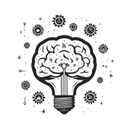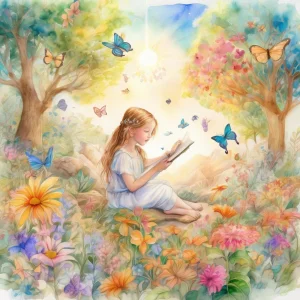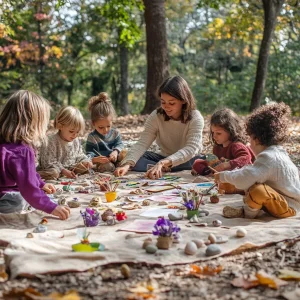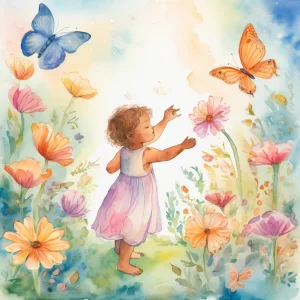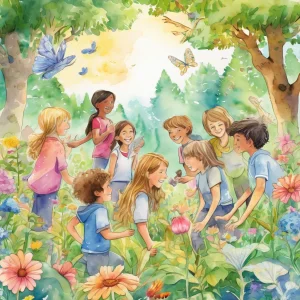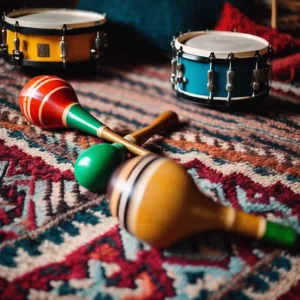Activity
Similar Activities
Nature-Inspired Drawing Activity
Children’s Age: 8–9 years
Activity Duration: 10 – 25 minutes
An outdoor activity where children draw natural elements to foster creativity and ecological awareness.
Activity Duration: 10 – 25 minutes
Animal Feast Adventure: A Whimsical Feeding Frenzy
Children’s Age: 5–8 years
Activity Duration: 10 – 25 minutes
An interactive activity where children feed toy animals with pretend food, promoting communication skills and adaptive development.
Activity Duration: 10 – 25 minutes
Cultural Collage Creations: Exploring World Wonders Together
Children’s Age: 7–9 years
Activity Duration: 10 – 25 minutes
Let's embark on a creative journey with "Cultural Collage Creations"! This educational craft project invites children to explore diverse cultures through art. Gather supplies and c…
Activity Duration: 10 – 25 minutes
Whispers of Nature Rhythms: Exploring Beats and Patterns
Children’s Age: 3–7 years
Activity Duration: 10 – 30 minutes
Let's explore "Nature Rhythms" together! We will listen to nature's beats and patterns using rocks, sticks, leaves, and pinecones. Find a safe outdoor spot, gather natural material…
Activity Duration: 10 – 30 minutes
Enchanted Forest: The Nature Scavenger Hunt
Children’s Age: 2–6 years
Activity Duration: 15 minutes
Let's go on a Nature Scavenger Hunt to explore and enjoy nature! You'll need a basket, a list of items to find, paper, markers, and maybe some magnifying glasses. Choose a safe out…
Activity Duration: 15 minutes
Nature Explorers: Scavenger Hunt & Art
Children’s Age: 2–6 years
Activity Duration: 10 minutes
Let's go on a Nature Scavenger Hunt and Outdoor Art adventure! We will explore nature, collect items, and create beautiful artwork. You will need a bag, paper, crayons, watercolors…
Activity Duration: 10 minutes
Mini Compost Bin Creations: Earth's Garden Journey
Children’s Age: 4–6 years
Activity Duration: 15 – 20 minutes
Children aged 4 to 6 can engage in creating a mini compost bin to explore composting and Earth's natural cycles. Using simple materials like a plastic bin, soil, kitchen scraps, an…
Activity Duration: 15 – 20 minutes
Enchanted Nature Walk: The Sensory Adventure
Children’s Age: 1–1.5 years
Activity Duration: 10 minutes
Engage your 12 to 18-month-old in the Sensory Nature Walk to boost their language, sensory, and social skills through outdoor exploration. Prepare for the adventure by dressing you…
Activity Duration: 10 minutes
Enchanted Sensory Garden Exploration for Infants
Children’s Age: 0 – 3 months
Activity Duration: 10 minutes
Explore the Sensory Garden with your little one aged 0 to 3 months for a delightful outdoor sensory experience. Enhance communication skills and adaptive development as your infant…
Activity Duration: 10 minutes
Enchanted Nature Scavenger Hunt: Sensory Adventure
Children’s Age: 1.5–2 years
Activity Duration: 10 minutes
The Sensory Nature Scavenger Hunt is a wonderful activity designed for children aged 18 to 24 months to explore the natural world. Through this engaging hunt, kids enhance cognitiv…
Activity Duration: 10 minutes
Enchanted Forest Math Quest: Nature's Math Adventure
Children’s Age: 12–16 years
Activity Duration: 1 hour
Nature's Math Adventure is an engaging activity designed for children aged 12 to 16 years. It promotes cognitive development, ecological awareness, and healthy habits while incorpo…
Activity Duration: 1 hour
Enchanted Forest: Nature Theater Digital Adventure
Children’s Age: 6–10 years
Activity Duration: 30 minutes
The "Nature Theater: Digital Storytelling Adventure" activity blends nature, theater, and technology to nurture children's creativity, cognitive skills, and self-regulation abiliti…
Activity Duration: 30 minutes


